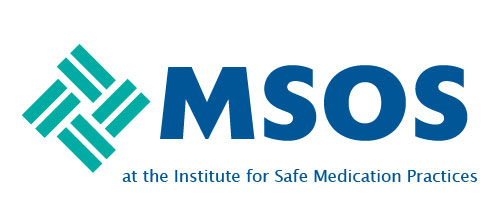Feed aggregator
Breathing System Filters Recall: Draeger Removes SafeStar and TwinStar Filters Due to Risk of Misleading Carbon Dioxide (CO₂) Readings
Tandem Diabetes Care Issues Voluntary Medical Device Correction for Select t:slim X2 Insulin Pumps
DermaRite Industries Issues Voluntary Nationwide Recall of DermaKleen, Dermasarra, Kleenfoam, and Perigiene Products Due to Burkholderia cepacia Contamination
FDA Update on the Safety of Ixchiq (Chikungunya Vaccine, Live): FDA Safety Communication
Early Alert: Electrophysiology Catheter Issue from Medline ReNewal
Early Alert: WATCHMAN Access System Issue from Boston Scientific
Early Alert: Defibrillation Lead Issue from Boston Scientific
Continuous Ventilator Correction: Philips Respironics Updates Use Instructions for BiPAP A30, A40, and V30 Devices Due to Interruptions and/or Loss of Therapy
FDA is Requiring Opioid Pain Medicine Manufacturers to Update Prescribing Information Regarding Long-Term Use: Drug Safety Communication
Disposable Surgical Stapler Cartridge Correction: Ethicon Endo-Surgery, LLC Issues Correction for Endopath Echelon to Address Inadvertent Lockout During Surgical Procedures
Arterial Cannula Recall: Edwards Lifesciences Removes Arterial Cannula due to Risk of Wire Exposure
Mobile Lift Component Recall: Baxter Healthcare Corporation Removes Mobile Lift Component due to Risk of Improper Attachment
Early Alert: Infusion Pump Issue from Baxter
Medical Procedure Kits Correction: Medline Industries, LP Issues Correction for Medline Craniotomy Kits Containing Codman Disposable Perforators Due to Risk for Device Disassembly
Applicator Recall: Integra LifeSciences Removes MicroMyst Applicators Due to Potential Sterility Concerns
Continuous Ventilator (Respirator) Correction: Maquet Critical Care AB Updates Use Instructions for Servo Ventilator Systems Due to Risk of Inaccurate Compliance Measurement Leading to Improper Tidal Volume Delivery in Neonatal Patients
Ending nuclear weapons, before they end us
This May, the World Health Assembly (WHA) will vote on re-establishing a mandate for the WHO to address the health consequences of nuclear weapons and war.1 Health professionals and their associations should urge their governments to support such a mandate and support the new United Nations (UN) comprehensive study on the effects of nuclear war.
The first atomic bomb exploded in the New Mexico desert 80 years ago, in July 1945. Three weeks later, two relatively small (by today’s standards), tactical-size nuclear weapons unleashed a cataclysm of radioactive incineration on Hiroshima and Nagasaki. By the end of 1945, about 213 000 people were dead.2 Tens of thousands more have died from late effects of the bombings.
Last December, Nihon Hidankyo, a movement that brings together atomic bomb survivors, was awarded the Nobel Peace Prize for its ‘efforts to achieve a world free of nuclear weapons...
Why hospital falls prevention remains a global healthcare priority
The article by Cho et al1 in the current issue of BMJ Quality and Safety addresses the persistent and debilitating problem of hospital falls, which remain a challenge worldwide. Despite decades of research on hospital falls,2 considerable effort by health professionals,3 and publication of clinical guidelines on falls prevention,4 5 falls and associated injuries continue to be a major threat to patient safety and quality. The reasons why hospital falls continue to be associated with injuries and increased hospital length of stay are incompletely understood and vary across patients and settings. What is known is that patient falls education early after hospital admission helps to prevent falls.6–8 Staff education on how to prevent hospital falls also helps to reduce the risk.9 Exercise, safe footwear, environmental modifications, use of assistive devices such...
Under-reporting of falls in hospitals: a multisite study in South Korea
Inpatient falls are adverse events that often result in injury due to complex interactions between the hospital environment and patient risk factors and remain a significant problem in clinical settings.
ObjectivesThis study aimed to identify (1) practice variations and key issues ranging from hospital fall management protocols to incident detection, and (2) potential approaches to address these challenges.
DesignRetrospective cohort study.
SettingFour general hospitals in South Korea.
MethodsQualitative and quantitative data were analysed using the Donabedian quality outcomes model. Data were collected retrospectively during 2015–2023 from four general hospitals on local practice protocols, patient admission and nursing data from electronic records, and incident self-reports. Content analysis of practice protocol and manual chart reviews for hospital falls incidents was conducted at each site. Quantitative analyses of nursing activities and analysis of patient falls prevention interventions were also conducted at each site.
ResultsThere were variations in fall definitions, risk-assessment tools and inclusion and exclusion criteria among the local fall management protocols. The original and modified versions of the heuristic tools performed poorly to moderately, with areas under the receiver operating characteristic curve of 0.54~0.74 and 0.59~0.80, respectively. Preventive intervention practices varied significantly among the sites, with risk-targeted and tailored interventions delivered to only 1.15%~49.5% of at-risk patients. Fall events were not recorded in self-reporting systems and nursing notes for 29.5%~90.6% and 4.4%~17.1% of patients, respectively.
ConclusionChallenges in fall prevention included weaknesses in the design and implementation of local fall protocols and low-quality incident self-reporting systems. Systematic and sustainable solutions are needed to help reduce hospital fall rates and injuries.
